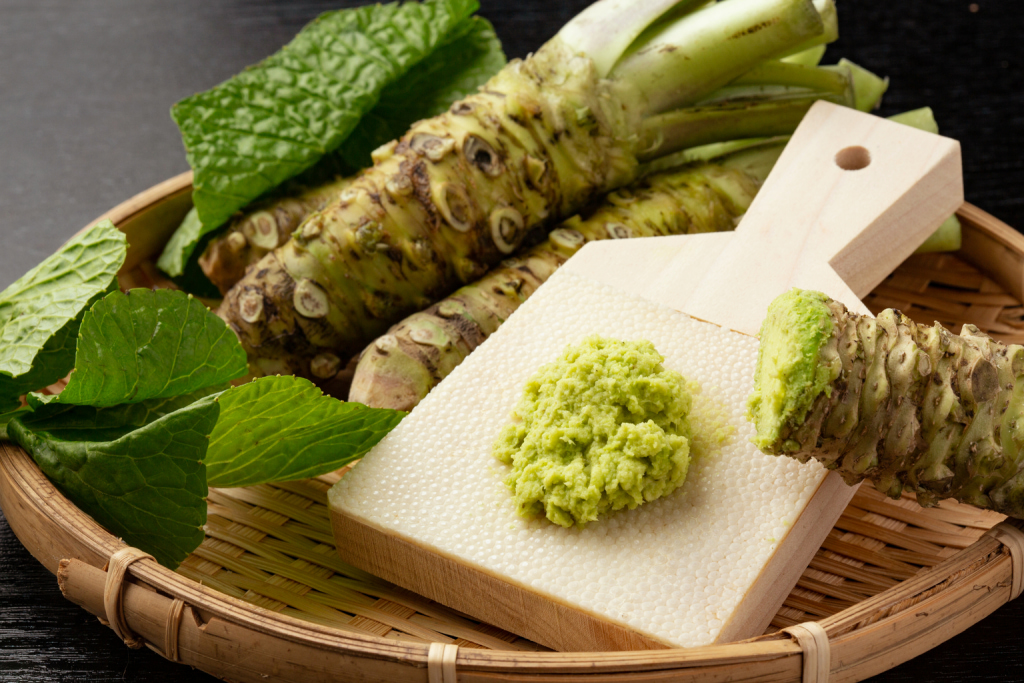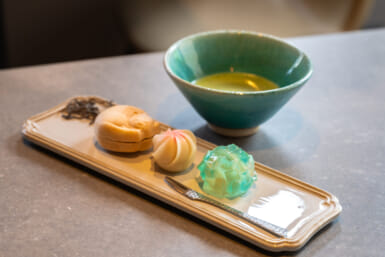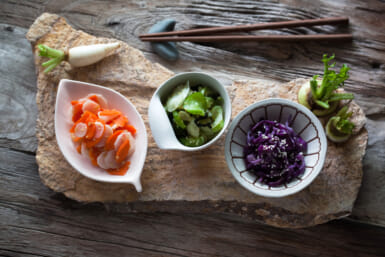The Origins and History of Wasabi
Wasabi was first cultivated in Japan in the 10th century after it was discovered growing by mountain streams, thriving alongside running water and shade. It was originally cultivated for its health benefits, which we’ll go into later. From the start of Japan’s medieval period in the 1200s, wasabi started to be used in sushi.
Areas such as Nagano, Iwate and Shizuoka are particularly keen cultivators of the root, together growing around 83% of Japan’s wasabi.
Outside of Japan, it is extremely rare. In recent years, as the popularity and demand for Japanese food has grown, the awareness of wasabi has increased along with it. Countries such as Taiwan and New Zealand have started to grow their own wasabi, although Japan remains far and away the main producer. It is a very temperamental vegetable, with particular climate requirements and small yields. It is also prone to disease. Consequently, in the U.S., there are fewer than a handful of wasabi farms, with the plant reaching around $100 for 250 grams.
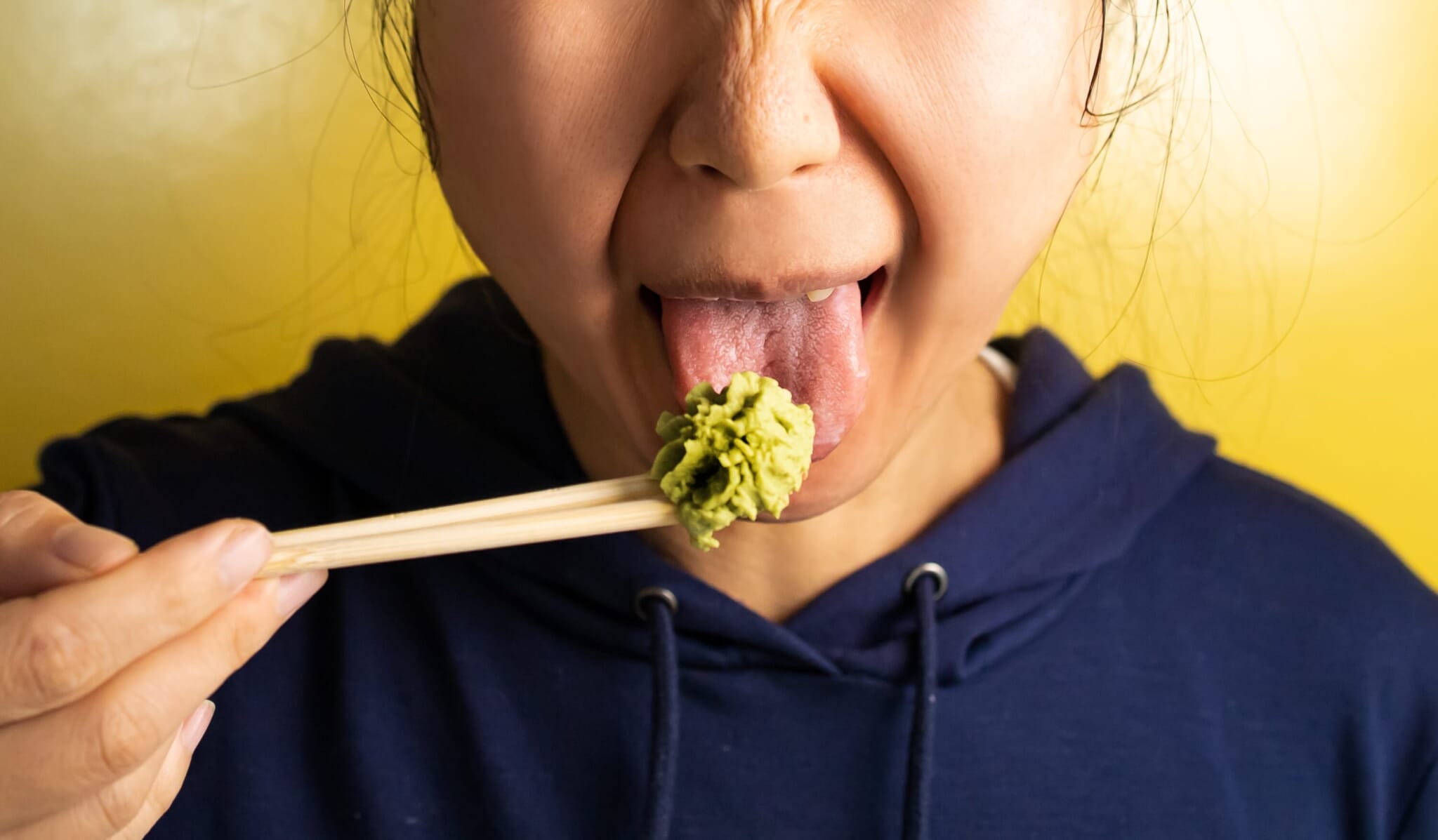
What Does Wasabi Taste Like?
Wasabi has an incredibly distinctive taste, which is why it’s so prized in Japanese cuisine. When the stem is grated, it releases isothiocyanate, the chief constituent of natural mustard oil. This is a different type of spice compared to what is used elsewhere in the world. Western spiciness is generally derived from capsicum oil that lingers in the mouth and is found in foods such as chili peppers.
In contrast, the spiciness of mustard oil flowers into the nose, inducing eye-watering before promptly disappearing. This leaves the palate clean and fresh. For anyone sensitive to the taste, drinking hot water should make it dissipate. The optimal time to eat wasabi varies, but it is generally said to be within the first five to 10 minutes of grating.
Why is it so spicy?
The wasabi plant is not inherently spicy. Yet, once it is grated, it releases isothiocyanate compounds, which react with our pain receptors, making for that spicy feeling.
How to make it spicy
As wasabi is grated, the more mustard oil it releases. To this end, there are several special types of graters which have traditionally been used for many years.
- The most effective is the sharkskin grater, used by professional sushi chefs thanks to its coarse bumps which grate the stem into a bumpy paste. When wasabi is grated, you can see the oil as it is released, turning the gratings into a type of slushy paste. Back in the medieval times, Japanese sushi chefs would use shark fins to grate wasabi, which is where the current-day graters took inspiration. Sometimes it is referred to as a strawberry grater.
- The other type is a metal grater which has raised teeth. Grating wasabi with a metal grater will result in bigger chunks than the sharkskin, but it is cheap and easy to use.
- A grater to take to the dinner table is the ceramic wasabi grater. Its smooth, raised bumps are no match for the skin version, but it is very practical and allows for the vegetable to be freshly grated right before eating.
Health Benefits of Wasabi
The high content of isothiocyanates means that, potentially, wasabi has anti-carcinogenic and cardiovascular benefits. Isothiocyanates are said to detoxify carcinogens by activating enzymes in the liver, kicking them into action to defeat any harmful bodies. The plant also acts as an antibacterial agent.
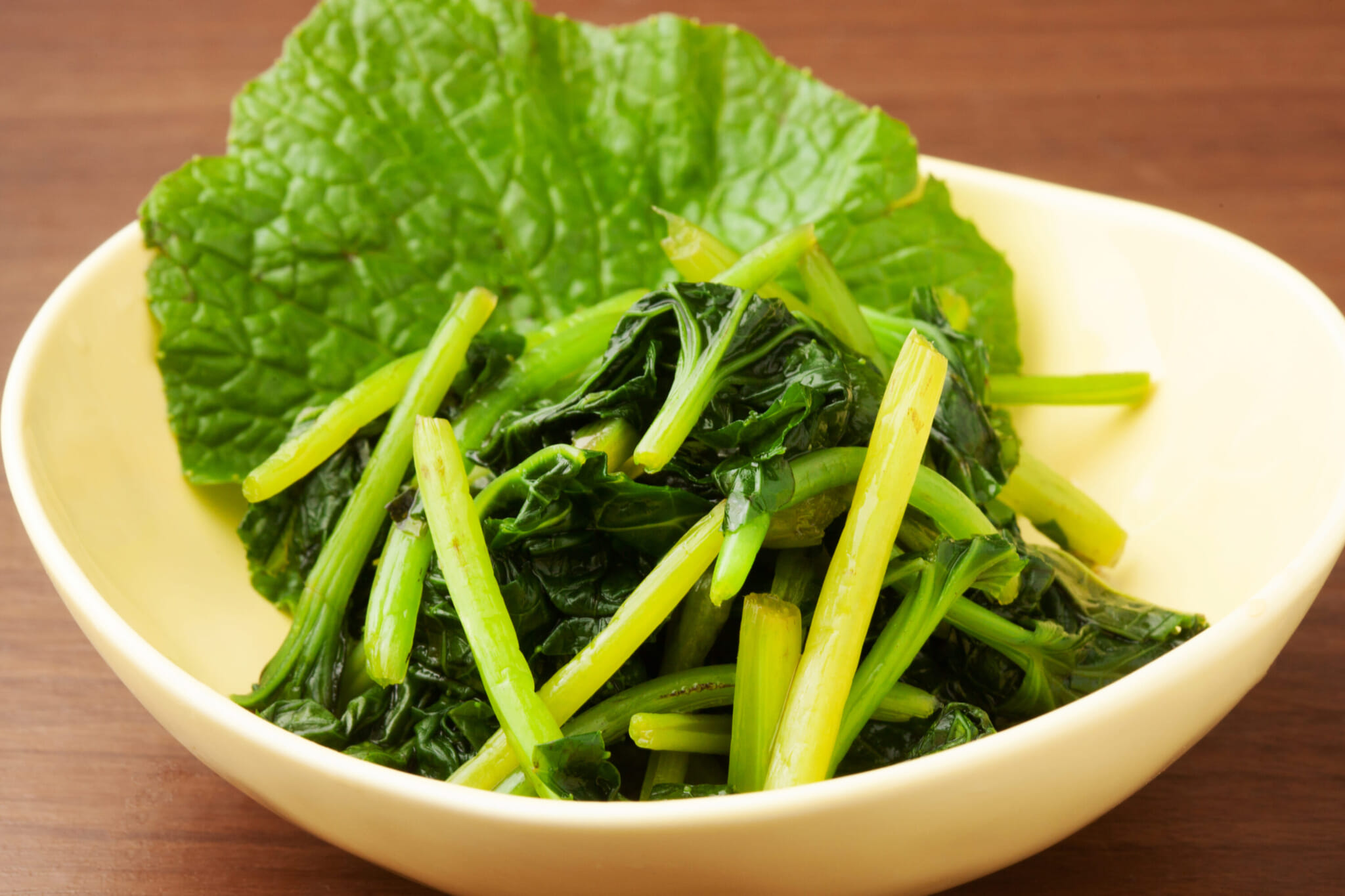
Cooking Uses and Types of Wasabi
A good thing about wasabi is no wastage. Every part of the plant can be used, including the leaves, which also release the mustard oil. Its leaves are often pickled and served as an accompaniment to rice.
The most common way to use wasabi is, however, its stem. It was first used in Japanese cooking as an addition to sushi, for its antibacterial properties. Thanks to its quick-dissipating flavor, it swiftly became the spice of choice for sushi chefs, replacing the pickled ginger that was favored before. It goes well with raw fish, adding a blast of heat that quickly disappears, leaving diners to enjoy the fish itself.
As wasabi began to be cultivated widely for sushi, other types of Japanese dishes adopted it as well. Nowadays, it can also be found in udon and soba as well as with sashimi, to add a spicy punch.
Head to any Japanese convenience store and you may spot a few wasabi-flavored snacks, too. Dried peanuts with alcohol are especially popular. The flavor can sometimes be found in more outlandish snacks, such as Kit Kat and ice cream.
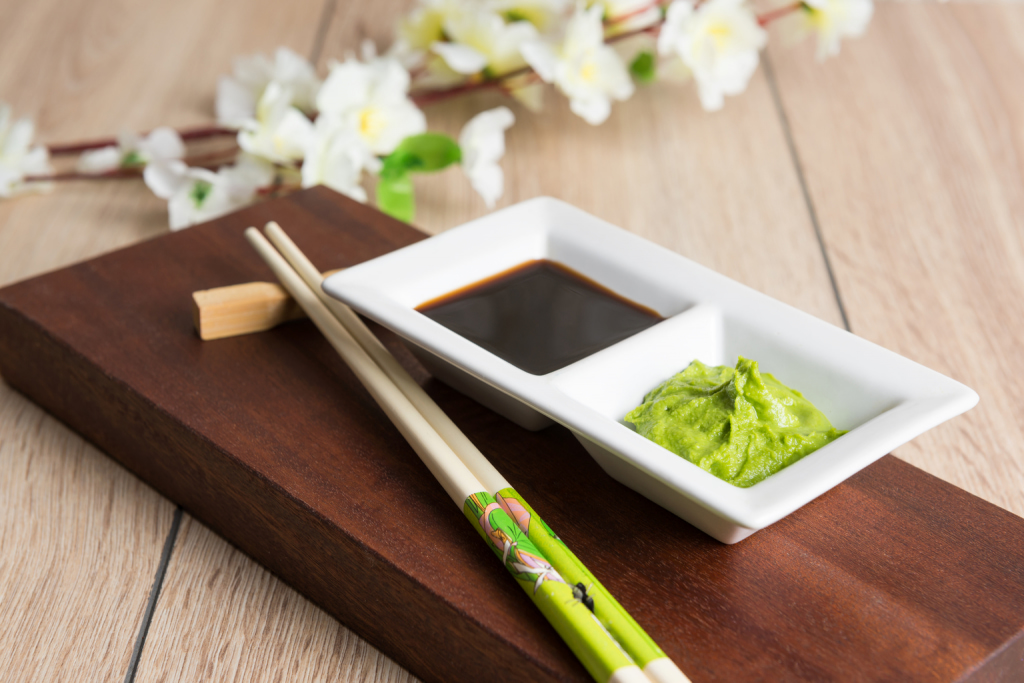
Where to Find and Buy Wasabi
In Japan, you can find wasabi in most supermarkets, sold at a premium compared to other brassica vegetables. It’s still very hard to cultivate and grow, which drives the price up. Buying in a Japanese supermarket, however, is still a lot cheaper than trying to find it overseas.
Wasabi Substitutes
Even if you do manage to procure wasabi outside of Japan, chances are that it’ll be so expensive you may reconsider your choice and look for alternatives.
- Powder: This is likely what you’ll be given when visiting sushi shops abroad. Contrary to popular belief, the powder doesn’t contain the vegetable itself. Instead, it is made of powdered horseradish, a root vegetable found abroad that contains mustard oil. Horseradish, naturally white, is colored with peppermint to make it appear green like wasabi.
- Paste (tube): This is more common in Japan than abroad, but unlike horseradish powder, the tubed variety tends to contain actual wasabi.

